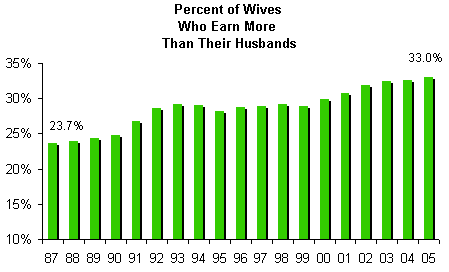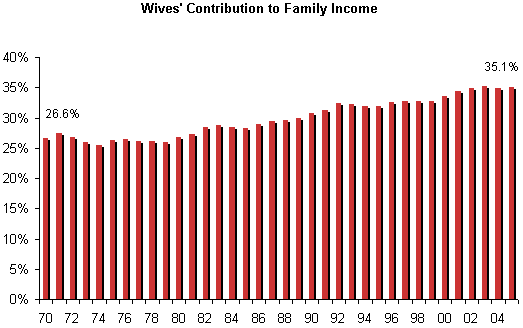IDEX Online Research: Jewelers - Target Female Self-Purchasers, Part VI
July 28, 09
The model family of the 1950s, Dad is the sole earner and Mom is at home cooking three hot meals a day, is hard to be found in the U.S. these days. In this multi-part series, we are looking at what this means for jewelers. The good news: more women than ever before work outside of the home and now have the discretionary income to buy jewelry for themselves. The opportunity: Women that earn more than their spouses do.
Some Wives Earn More Than Their Husbands
Roughly one-third of all employed wives earn more than their employed husbands, among families where both spouses work.
The graph below illustrates the rising proportion of wives who earn more than their husbands.

Source: BLS
Here are some other highlights about working women and their contributions to family income levels.
- Working wives’ contributions to family income has grown to about 35 percent of total family income, up from about 26 percent thirty years ago.
 Source: BLS |
- In part, higher education levels are responsible for women’s increased earning power. Young women are more likely to enter college than young men – 72 percent for women versus 61 percent for men. More women than men are graduating from college today.
- In 1970, 2.2 percent of employed women were multiple job holders. By 1995, the rate had nearly tripled to 6.5 percent. Since then, it has declined modestly to 5.6 percent of all employed females who hold multiple jobs. The percentage of men holding multiple jobs has also declined modestly to about 4.9 percent. Thus, women are more likely to hold multiple jobs than men by a slight margin.
- Women are more likely than men to work part time (fewer than 35 hours per week). Women who worked part time in 2007 made up nearly 25 percent of all female wage and salary workers. In contrast, only about 10 percent of men in wage and salary jobs work part time. These proportions have not changed much over time.